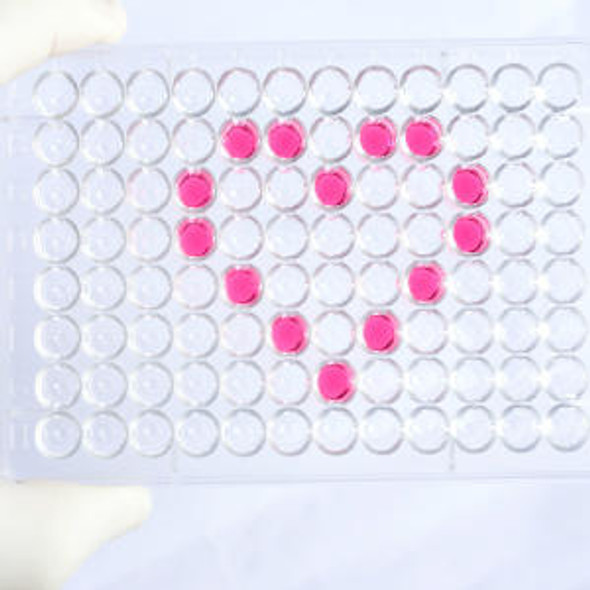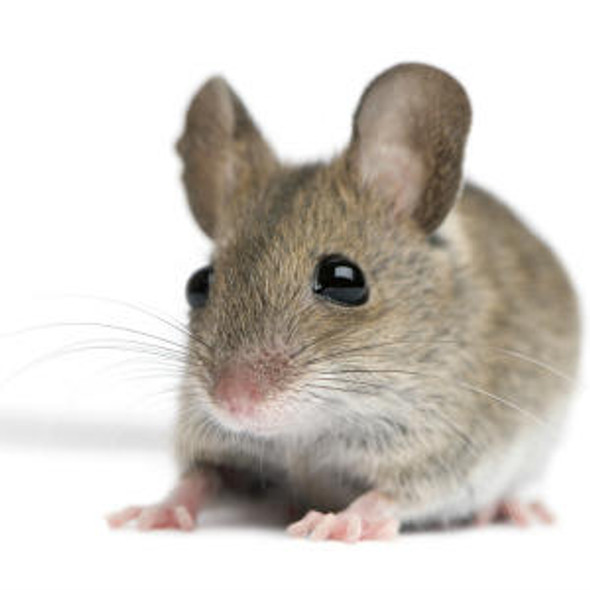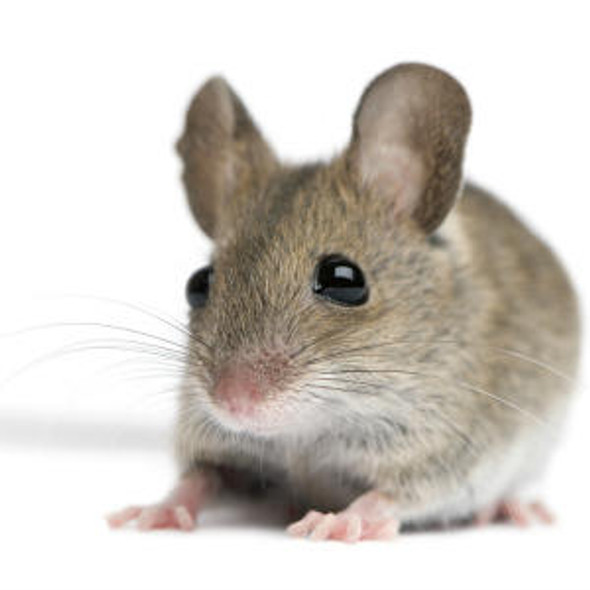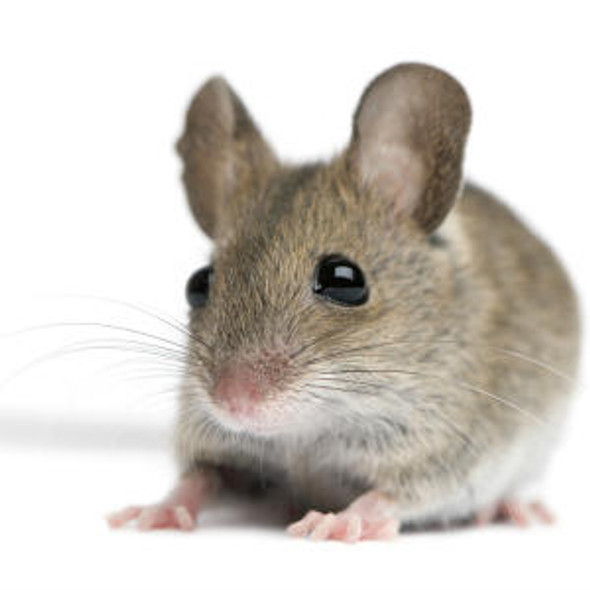Mouse Protein Wnt-5a (Wnt5a) ELISA Kit
- SKU:
- MOEB0764
- Product Type:
- ELISA Kit
- Size:
- 96 Assays
- Uniprot:
- P22725
- Range:
- 0.312-20 ng/mL
- ELISA Type:
- Sandwich
- Synonyms:
- Wnt5a, WNT5A, Protein Wnt-5a, wingless-type MMTV integRation site family, member 5A, WNT-5A protein
- Reactivity:
- Mouse
Description
| Product Name: | Mouse Protein Wnt-5a (Wnt5a) ELISA Kit |
| Product Code: | MOEB0764 |
| Alias: | Protein Wnt-5a, Wnt5a, Wnt-5a |
| Uniprot: | P22725 |
| Reactivity: | Mouse |
| Range: | 0.312-20 ng/mL |
| Detection Method: | Sandwich |
| Size: | 96 Assay |
| Storage: | Please see kit components below for exact storage details |
| Note: | For research use only |
| UniProt Protein Function: | WNT5A: Ligand for members of the frizzled family of seven transmembrane receptors. Can activate or inhibit canonical Wnt signaling, depending on receptor context. In the presence of FZD4, activates beta-catenin signaling. In the presence of ROR2, inhibits the canonical Wnt pathway by promoting beta-catenin degradation through a GSK3-independent pathway which involves down-regulation of beta-catenin-induced reporter gene expression. Suppression of the canonical pathway allows chondrogenesis to occur and inhibits tumor formation. Stimulates cell migration. Decreases proliferation, migration, invasiveness and clonogenicity of carcinoma cells and may act as a tumor suppressor. Mediates motility of melanoma cells. Required during embryogenesis for extension of the primary anterior-posterior axis and for outgrowth of limbs and the genital tubercle. Inhibits type II collagen expression in chondrocytes. Interacts with PORCN. Interacts with WLS. Expression is increased in differentiated thyroid carcinomas compared to normal thyroid tissue and anaplastic thyroid tumors where expression is low or undetectable. Expression is found in thyrocytes but not in stromal cells. Belongs to the Wnt family. 2 isoforms of the human protein are produced by alternative splicing. |
| UniProt Protein Details: | Protein type:Secreted, signal peptide; Secreted Cellular Component: proteinaceous extracellular matrix; extracellular space; cell surface; cytoplasm; extracellular region; intracellular Molecular Function:protein domain specific binding; protein binding; receptor tyrosine kinase-like orphan receptor binding; frizzled binding; cytokine activity; transcription factor activity; receptor binding; frizzled-2 binding Biological Process: neural tube development; positive regulation of JNK activity; activation of MAPK activity; embryonic skeletal development; multicellular organismal development; positive regulation of transcription, DNA-dependent; negative chemotaxis; positive regulation of endocytosis; Wnt receptor signaling pathway through beta-catenin; negative regulation of synaptogenesis; positive regulation of interleukin-1 beta secretion; uterus development; protein amino acid phosphorylation; activation of NF-kappaB transcription factor; negative regulation of BMP signaling pathway; anterior/posterior pattern formation; positive regulation of fibroblast proliferation; regulation of protein localization; cell-cell signaling; determination of anterior/posterior axis, embryo; convergent extension; positive regulation of mesenchymal cell proliferation; JNK cascade; embryonic limb morphogenesis; positive regulation of macrophage activation; positive regulation of cytokine production; inner ear morphogenesis; somitogenesis; cell fate commitment; urinary bladder development; olfactory bulb interneuron development; activation of protein kinase B; vagina development; positive regulation of interleukin-6 production; digestive tract morphogenesis; negative regulation of fat cell differentiation; organ morphogenesis; positive regulation of angiogenesis; genitalia development; Wnt receptor signaling pathway, calcium modulating pathway; positive regulation of protein catabolic process; midgut development; positive regulation of transcription from RNA polymerase II promoter; positive regulation of endothelial cell proliferation; embryonic digit morphogenesis; determination of left/right symmetry; negative regulation of transcription, DNA-dependent; positive regulation of epithelial cell proliferation; negative regulation of apoptosis; axon guidance; wound healing; negative regulation of fibroblast growth factor receptor signaling pathway; hypophysis morphogenesis; positive regulation of cytokine secretion during immune response; positive regulation of JNK cascade; palate development; signal transduction; negative regulation of axon extension involved in axon guidance; activation of JNK activity; positive regulation of cell proliferation; positive regulation of cell-cell adhesion; morphogenesis of an epithelium; establishment of planar polarity; heart looping; cell differentiation; negative regulation of epithelial cell proliferation; cervix development; cell migration; Wnt receptor signaling pathway; positive regulation of meiosis; Wnt receptor signaling pathway, planar cell polarity pathway; male gonad development; positive regulation of peptidyl-serine phosphorylation; limb morphogenesis; positive regulation of cGMP metabolic process; positive regulation of ossification; development of primary male sexual characteristics; convergent extension involved in organogenesis; embryonic development; positive regulation of interferon-gamma production; positive regulation of chemokine biosynthetic process; cartilage development; ameboidal cell migration; neural tube closure; hindgut morphogenesis; positive regulation of protein amino acid phosphorylation; neurite morphogenesis; positive regulation of inflammatory response; lung development |
| UniProt Code: | P22725 |
| NCBI GenInfo Identifier: | 371940979 |
| NCBI Gene ID: | 22418 |
| NCBI Accession: | NP_001243153.1 |
| UniProt Secondary Accession: | P22725,Q8BM17, Q8BMF9, Q8VCV6, |
| UniProt Related Accession: | P22725 |
| Molecular Weight: | |
| NCBI Full Name: | protein Wnt-5a isoform 2 |
| NCBI Synonym Full Names: | wingless-related MMTV integration site 5A |
| NCBI Official Symbol: | Wnt5a |
| NCBI Official Synonym Symbols: | Wnt-5a; 8030457G12Rik |
| NCBI Protein Information: | protein Wnt-5a |
| UniProt Protein Name: | Protein Wnt-5a |
| Protein Family: | Protein |
| UniProt Gene Name: | Wnt5a |
| UniProt Entry Name: | WNT5A_MOUSE |
| Component | Quantity (96 Assays) | Storage |
| ELISA Microplate (Dismountable) | 8×12 strips | -20°C |
| Lyophilized Standard | 2 | -20°C |
| Sample Diluent | 20ml | -20°C |
| Assay Diluent A | 10mL | -20°C |
| Assay Diluent B | 10mL | -20°C |
| Detection Reagent A | 120µL | -20°C |
| Detection Reagent B | 120µL | -20°C |
| Wash Buffer | 30mL | 4°C |
| Substrate | 10mL | 4°C |
| Stop Solution | 10mL | 4°C |
| Plate Sealer | 5 | - |
Other materials and equipment required:
- Microplate reader with 450 nm wavelength filter
- Multichannel Pipette, Pipette, microcentrifuge tubes and disposable pipette tips
- Incubator
- Deionized or distilled water
- Absorbent paper
- Buffer resevoir
*Note: The below protocol is a sample protocol. Protocols are specific to each batch/lot. For the correct instructions please follow the protocol included in your kit.
Allow all reagents to reach room temperature (Please do not dissolve the reagents at 37°C directly). All the reagents should be mixed thoroughly by gently swirling before pipetting. Avoid foaming. Keep appropriate numbers of strips for 1 experiment and remove extra strips from microtiter plate. Removed strips should be resealed and stored at -20°C until the kits expiry date. Prepare all reagents, working standards and samples as directed in the previous sections. Please predict the concentration before assaying. If values for these are not within the range of the standard curve, users must determine the optimal sample dilutions for their experiments. We recommend running all samples in duplicate.
| Step | |
| 1. | Add Sample: Add 100µL of Standard, Blank, or Sample per well. The blank well is added with Sample diluent. Solutions are added to the bottom of micro ELISA plate well, avoid inside wall touching and foaming as possible. Mix it gently. Cover the plate with sealer we provided. Incubate for 120 minutes at 37°C. |
| 2. | Remove the liquid from each well, don't wash. Add 100µL of Detection Reagent A working solution to each well. Cover with the Plate sealer. Gently tap the plate to ensure thorough mixing. Incubate for 1 hour at 37°C. Note: if Detection Reagent A appears cloudy warm to room temperature until solution is uniform. |
| 3. | Aspirate each well and wash, repeating the process three times. Wash by filling each well with Wash Buffer (approximately 400µL) (a squirt bottle, multi-channel pipette,manifold dispenser or automated washer are needed). Complete removal of liquid at each step is essential. After the last wash, completely remove remaining Wash Buffer by aspirating or decanting. Invert the plate and pat it against thick clean absorbent paper. |
| 4. | Add 100µL of Detection Reagent B working solution to each well. Cover with the Plate sealer. Incubate for 60 minutes at 37°C. |
| 5. | Repeat the wash process for five times as conducted in step 3. |
| 6. | Add 90µL of Substrate Solution to each well. Cover with a new Plate sealer and incubate for 10-20 minutes at 37°C. Protect the plate from light. The reaction time can be shortened or extended according to the actual color change, but this should not exceed more than 30 minutes. When apparent gradient appears in standard wells, user should terminatethe reaction. |
| 7. | Add 50µL of Stop Solution to each well. If color change does not appear uniform, gently tap the plate to ensure thorough mixing. |
| 8. | Determine the optical density (OD value) of each well at once, using a micro-plate reader set to 450 nm. User should open the micro-plate reader in advance, preheat the instrument, and set the testing parameters. |
| 9. | After experiment, store all reagents according to the specified storage temperature respectively until their expiry. |
When carrying out an ELISA assay it is important to prepare your samples in order to achieve the best possible results. Below we have a list of procedures for the preparation of samples for different sample types.
| Sample Type | Protocol |
| Serum | If using serum separator tubes, allow samples to clot for 30 minutes at room temperature. Centrifuge for 10 minutes at 1,000x g. Collect the serum fraction and assay promptly or aliquot and store the samples at -80°C. Avoid multiple freeze-thaw cycles. If serum separator tubes are not being used, allow samples to clot overnight at 2-8°C. Centrifuge for 10 minutes at 1,000x g. Remove serum and assay promptly or aliquot and store the samples at -80°C. Avoid multiple freeze-thaw cycles. |
| Plasma | Collect plasma using EDTA or heparin as an anticoagulant. Centrifuge samples at 4°C for 15 mins at 1000 × g within 30 mins of collection. Collect the plasma fraction and assay promptly or aliquot and store the samples at -80°C. Avoid multiple freeze-thaw cycles. Note: Over haemolysed samples are not suitable for use with this kit. |
| Urine & Cerebrospinal Fluid | Collect the urine (mid-stream) in a sterile container, centrifuge for 20 mins at 2000-3000 rpm. Remove supernatant and assay immediately. If any precipitation is detected, repeat the centrifugation step. A similar protocol can be used for cerebrospinal fluid. |
| Cell culture supernatant | Collect the cell culture media by pipette, followed by centrifugation at 4°C for 20 mins at 1500 rpm. Collect the clear supernatant and assay immediately. |
| Cell lysates | Solubilize cells in lysis buffer and allow to sit on ice for 30 minutes. Centrifuge tubes at 14,000 x g for 5 minutes to remove insoluble material. Aliquot the supernatant into a new tube and discard the remaining whole cell extract. Quantify total protein concentration using a total protein assay. Assay immediately or aliquot and store at ≤ -20 °C. |
| Tissue homogenates | The preparation of tissue homogenates will vary depending upon tissue type. Rinse tissue with 1X PBS to remove excess blood & homogenize in 20ml of 1X PBS (including protease inhibitors) and store overnight at ≤ -20°C. Two freeze-thaw cycles are required to break the cell membranes. To further disrupt the cell membranes you can sonicate the samples. Centrifuge homogenates for 5 mins at 5000xg. Remove the supernatant and assay immediately or aliquot and store at -20°C or -80°C. |
| Tissue lysates | Rinse tissue with PBS, cut into 1-2 mm pieces, and homogenize with a tissue homogenizer in PBS. Add an equal volume of RIPA buffer containing protease inhibitors and lyse tissues at room temperature for 30 minutes with gentle agitation. Centrifuge to remove debris. Quantify total protein concentration using a total protein assay. Assay immediately or aliquot and store at ≤ -20 °C. |
| Breast Milk | Collect milk samples and centrifuge at 10,000 x g for 60 min at 4°C. Aliquot the supernatant and assay. For long term use, store samples at -80°C. Minimize freeze/thaw cycles. |










